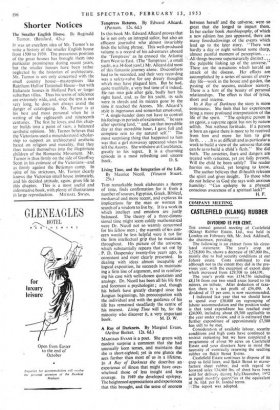Shorter Notices
The Smaller English House. By Reginald Tumor. (Batsford. 42s.) IT was an excellent idea of Mr. Tumor's to write a history of the smaller English house from 1500 to 1939. The precarious position of the great houses has brought them into particular prominence during recent years, but the smaller houses have been rather neglected by the historian of architecture. Mr. Tumor is not only concerned with the small country house—masterpieces like Rainham Hall or Tintinhull House—but with Italianate houses in Holland Park or larger suburban villas. Thus his terms of reference are extremely wide, and, since the text is not very long, he does not always avoid the danger of cataloguing. Mr. Tumor is at his best and most personal when he is writing of the eighteenth and nineteenth centuries. The first he loves, and this chap- ter builds into a point of view, a balanced aesthetic opinion. Mr. Tumor believes that the Victorians used a misunderstood scholar- ship to support an architectural aesthetic based on religion and morality, that they thus turned themselves into the illegitimate children of the Romantic Movement. Mr. Tumor is thus firmly on the side of Geoffrey Scott in his estimate of the Victorians—and as firmly against the Betjeman camp. In spite of his strictures, Mr. Tumor clearly knows the Victorian small house intimately, and his decided attitude, again, gives life to this chapter. This is a most useful and informative book, with plenty of illustrations


































 Previous page
Previous page